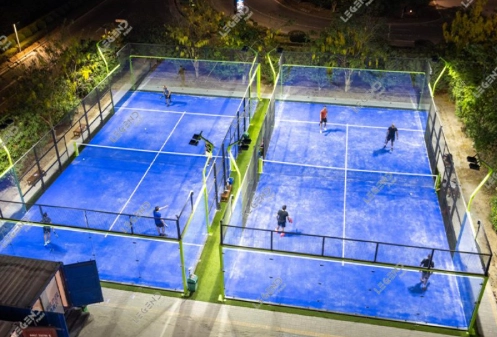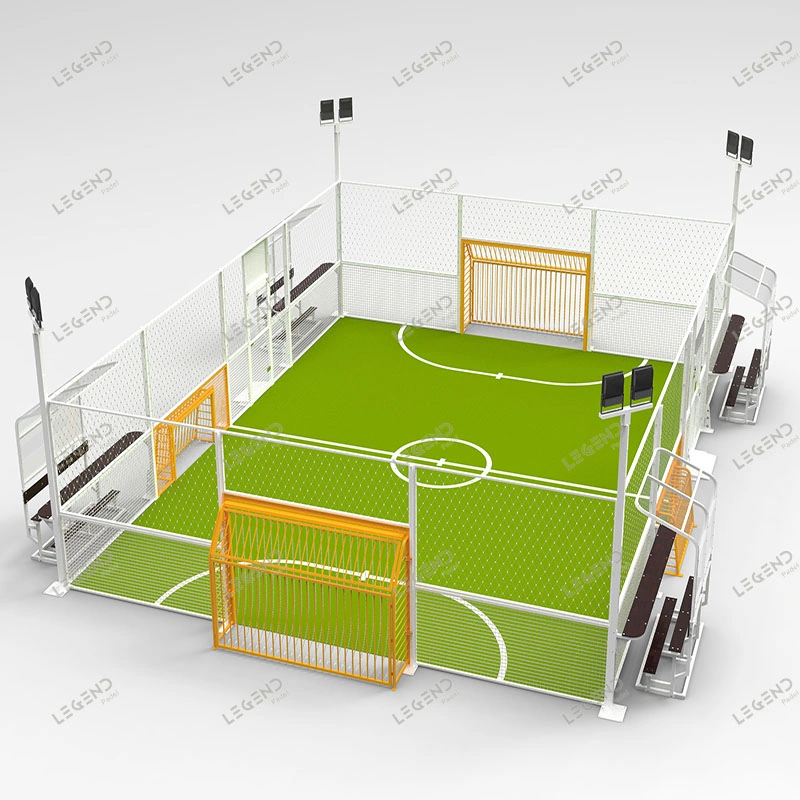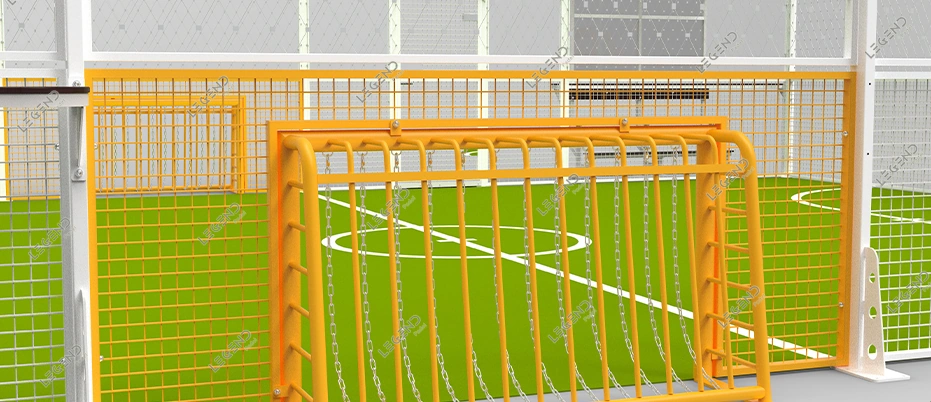What is Padel and Why is it So Popular?
The Origins of Padel
Padel began in Mexico in the 1960s. Enrique Corcuera created the first court by adapting his squash court. The sport slowly grew popular in Spain and Argentina. It later spread worldwide. Today, padel is played in over 60 countries. It is common in sports clubs, hotels, and tournaments globally.
Key Features of the Sport
Padel is a racket sport. It blends elements of tennis and squash. It is usually played in doubles. The court is enclosed by tempered glass walls and mesh. The game focuses on strategy, not power. This makes it suitable for players of all ages and skill levels. Padel courts are smaller than tennis courts. They measure 20 meters long and 10 meters wide. This ensures fast but manageable gameplay.
Reasons Behind Its Growing Popularity
Padel’s simple rules and fun focus drive its rise. Players find it easier to learn than other racket sports. It requires less physical strength. This appeals to various groups. Countries like Kuwait see more padel players. The sport boosts flexibility, endurance, and mental health. It also offers an engaging experience.
How to Build a Padel Court?
Understanding the Dimensions and Layout
Standard Dimensions of a Padel Court
A standard padel court is 20 meters long and 10 meters wide. Single-player courts are 20 meters by 6 meters. These sizes ensure uniformity in recreational and professional settings.
Essential Components of the Court Layout
Key parts include tempered glass walls for safety and durability. Mesh fencing defines boundaries. Artificial turf ensures good playability. LED lighting systems provide visibility for evening games. Tempered glass walls are built for high strength and clear viewing.
Selecting the Right Materials
Flooring Options for Padel Courts
Artificial turf is the top choice. It is durable and reduces abrasion risk. Legend Sports offers textured filament turf. It has a 12mm height and fully holds sand for better performance.
Glass Walls and Their Specifications
Walls use tempered glass, 12mm thick. This meets European standard EN12150-1 for safety and durability. It provides clear visibility for players and spectators.
Lighting Requirements for Optimal Play
Recommended Lighting Standards
Good lighting improves gameplay. Legend Sports uses eight 200W LED lights. These provide 300 Lux illuminance. This suits both casual and professional matches.
Energy-Efficient Lighting Solutions
LED lights use less energy than traditional systems. They offer steady brightness. Their long lifespan cuts maintenance costs. This makes them ideal for padel courts.
Installation Process Step-by-Step
- Site Preparation: Level the ground. Ensure proper drainage.
- Foundation Work: Build a strong base with high-quality SPHC steel structures.
- Glass Wall Installation: Secure tempered glass panels with precise fittings.
- Flooring Setup: Lay artificial turf using double PP+PU adhesive.
- Lighting Installation: Mount LED floodlights on six-meter-high stands.
- Final Inspection: Check stability, safety, and overall quality before use.

Maintenance and Care of the Padel Court
Regular Cleaning Practices
Maintaining the Playing Surface
Brush artificial turf regularly. This keeps its texture and prevents sand movement. Clear debris like leaves or dirt to maintain playability.
Caring for Glass Walls and Metal Structures
Clean tempered glass with non-abrasive solutions to keep it clear. Check steel structures for rust or wear. Legend Sports’ products have double-layered anti-corrosion coatings for longer life.
Seasonal Maintenance Tips
Preparing for Different Weather Conditions
In cold climates, ensure drainage systems work to prevent waterlogging or freezing. In warm months, check that artificial turf stays moist enough to avoid cracking or brittleness.
By following these steps, builders can create high-quality padel courts. These meet international standards and offer a great playing experience for enthusiasts worldwide.
How Much Does a Padel Court Cost?
Factors Influencing the Cost of Construction
Material Choices and Quality Standards
The cost of a padel court depends on materials used. High-quality materials ensure durability, safety, and good playing conditions. Tempered glass walls, 12mm thick, meet European standard EN12150-1. They provide strength and clarity for safety. Artificial turf is key. Legend Sports uses textured filament turf. It encapsulates sand to reduce abrasion. The turf is 12mm high and uses double PP+PU adhesive for secure setup.
Steel structures affect costs too. Legend Sports uses SPHC steel, 100x100x3mm, for columns and crossbars. This ensures stability and longevity. Surface treatments include advanced spraying for anti-corrosion and a smooth finish.
Location and Installation Expenses
Location impacts installation costs. Labor, transport, and site preparation vary. Indoor courts may need ventilation systems. Outdoor courts require weather-resistant features like drainage. Legend Sports tailors courts to each location. In cold climates, drainage prevents waterlogging or freezing.
Long-Term Costs: Maintenance and Repairs
Maintenance affects overall costs. Regular cleaning of artificial turf keeps it playable. Clean tempered glass with non-abrasive solutions to maintain clarity. Legend Sports’ steel structures have double-layered anti-corrosion coatings. This reduces repair needs. Seasonal maintenance, like checking drainage or turf moisture in extreme weather, adds to costs.

Why Choose Legend Sports for Padel Court Design?
Expertise in Designing High-Quality Courts
Legend Sports has over 17 years of experience in sports facility construction. We are leaders in padel court design and manufacturing. By 2023, they installed over 3,000 courts worldwide. We offer models like panoramic courts, mobile courts, and children’s courts to meet varied needs.
Legend Sports uses advanced production methods for quality results. Our steel structures get double spraying treatments for better anti-rust properties. Our artificial turf meets standards like UNE: 41958 IN and GB/T20394-2013.
Commitment to Industry Standards and Innovation
Legend Sports follows strict quality standards. We also keep innovating. Our tempered glass walls meet European safety standard EN12150-1. This ensures player safety and clear visibility. We offer custom options for turf color, steel structure color, logos, and glass types (tempered or laminated).
Our innovation includes the world’s first smart padel court. It features an electric door system, LED scoring displays, and monitoring playback capabilities.
Customer Support and After-Sales Services
Legend Sports offers full support from consultation to post-installation. Our one-stop service includes site measurement, design planning, construction management, and final checks. Our after-sales services ensure courts stay in top condition throughout their lifespan.
FAQ
Q: What is the standard size of a padel court?
A: A standard padel court is 20 meters long and 10 meters wide. Single-player courts are 20 meters by 6 meters.
Q: What materials are used for the walls?
A: Walls use tempered glass, 12mm thick. It meets European safety standards.
Q: How long does it take to install a padel court?
A: Installation time varies by location and complexity. It usually takes days to weeks.
Q: Can I customize my padel court?
A: Yes. Legend Sports offers options like turf colors (pink, green, blue), steel structure colors (blue, green), logos, and glass types.
Q: What maintenance does a padel court require?
A: Clean artificial turf and tempered glass regularly. Check drainage systems or turf moisture seasonally, based on climate.
By choosing Legend Sports, you get high-quality padel courts. These meet international standards and offer innovative features tailored to your needs.





